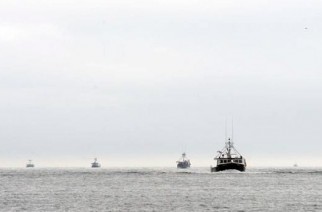The Chronicle Herald
It’s no secret that Georges Bank, Browns Bank and the German Bank aren’t what they used to be. While lobster populations have skyrocketed around southern Nova Scotia, the predators that once formed the backbone of the fishery haven’t rebounded significantly from their crashes in the early 1990s. The slow and uneven rebound of northern cod has defied hopes that the 1992 cod moratorium would result in a quick return of the upper-tier predator. “Once you’ve destroyed an ecosystem, you can’t look 20 years back and say, ‘It should look like this,’” said Albert d’Entremont, a retired biology teacher and regular at the café. “Something’s changed in the ecosystem and no one really knows what.”
“We killed them all,” Shand said of predator fish. “We hit them hard on the banks, 24 hours a day, seven days a week, and didn’t let them spawn freely.” And when the captains clutching their paper coffee cups say “we,” they mean “we” as a species. A huge fleet of foreign draggers descended on both the Scotian Shelf and Newfoundland’s Grand Banks after the Second World War. There were gillnetters and longliners. Even Pubnico’s seiners were there. When Shand says “them,” he means the massive stocks of cod and haddock and pollock and herring that one by one we as a species destroyed.
